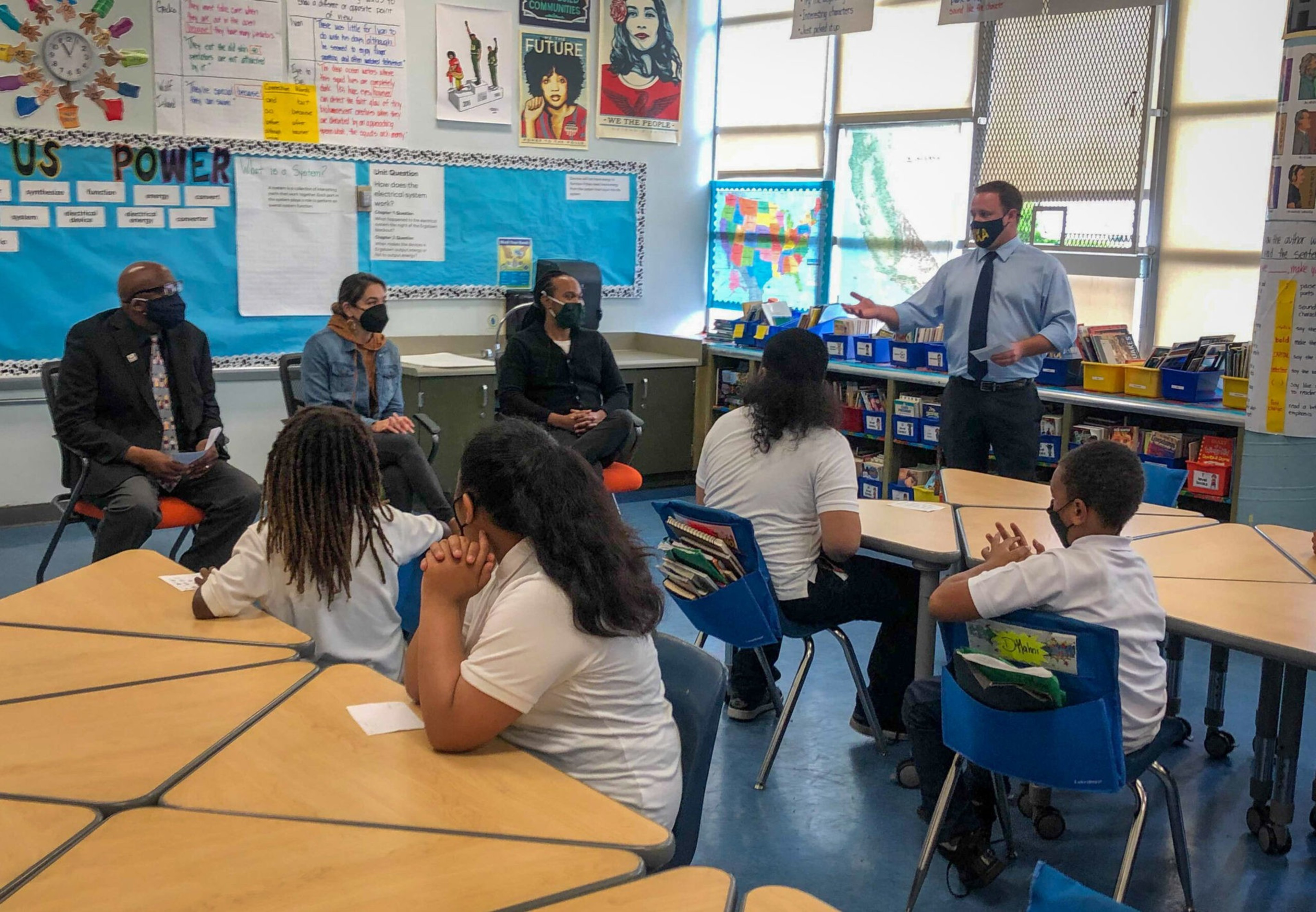A plan to close a $125 million budget shortfall at San Francisco Unified School District could include drastic cuts in classroom spending and other expenditures, according to a preliminary outline released by the district this week.
The budget plan would slash $10 million from direct student services, with a focus on programs with declining enrollment, and cut another $40 million from central office functions like administration and operations. The district could cut 360 full-time jobs as part of the plan, leaving individual school sites with fewer staff and scarcer resources for English language learners, students in foster care and other underprivileged children.
“I don’t think there is a way that we balance our budget without it having an impact on student experiences,” said Anne Marie Gordon, SFUSD’s executive director of budget services, at a board meeting on Tuesday, Nov. 2.
“There’s going to be an impact on school sites but we’re trying to do as much as we can to minimize that impact,” Gordon said.
Cuts to direct student services could include a $4 million reduction in special education services, which the district reports has seen drops in enrollment.
To close the gap, the district is also planning to seek out grants and other cost savings this school year.
The budget balancing plan is required by the state Department of Education, which told the district in a letter two weeks ago that it is “no longer a going concern,” meaning it can’t meet financial obligations. The state recommended a partial freeze on hiring and non-essential expenditures, among other immediate cost-cutting measures, and ordered the district to work with a state fiscal monitor on submitting a budget plan by Dec. 15.
That plan is one of several fiscal reports required by the state with the goal of stabilizing the district’s finances between now and 2024. California also appointed Elliott Duchon, a representative from the state Department of Education’s Fiscal Crisis and Management Assistance Team, to oversee the process.
“You have before you a very difficult task and it will require painful decisions,” said Duchon at Tuesday’s meeting. “Reducing a structural deficit of more than $125 million will neither be painless nor quick.”
Along with other school districts around the state, SFUSD is advocating for further fiscal protection from enrollment declines during the pandemic. Under a system called the Local Control Funding Formula (LCFF), state funding for school districts is determined by student attendance numbers.
The state has held districts harmless for pandemic-related enrollment declines so far, but it’s unclear whether those protections will be extended. Enrollment in S.F. public schools dropped by about 6.6% between fall 2019 and fall 2021, which equates to about $35 million in state funding under the LCFF. The district’s enrollment declines were roughly consistent with other school districts across the state.
Tensions occasionally ran high Tuesday evening as educators grappled with the proposed budget cuts and staffing implications. Much of the public comment revolved around cuts to special education.
“We are overworked and overburdened,” said Lisa Abrons, a special education teacher at Raoul Wallenberg High School. “This so-called enrollment decrease is not being seen by case managers. The needs of our case loads have actually increased greatly.”
Public commenters and some board members also questioned whether SFUSD administration was getting off easy compared to cuts to student services.
Commissioner Matt Alexander noted that SFUSD’s central office is staffed at approximately three times the level of Long Beach’s central office, despite the two districts being comparable in size. “Sometimes, to be honest, more people doesn’t mean better services,” said Alexander.
The central office is slated for $5 million in cuts in 2022-23, or 3.5% of its current budget. In comparison, indirect services—a category which includes staff who support the staff providing direct services to students, training and extra hours for staff and program materials—is facing a 9.3% reduction.
“At the end of the day we have to make $125 million in reductions,” said Superintendent Dr. Vincent Matthews. “There’s no ifs ands or buts about it.”
